Reader Revisited: An Interview with Het Lezerscollectief (The Readers’ Collective)
We're taking a trip down memory lane and revisiting articles from The Reader Magazine. This article first appeared in issue 73.
The Reader spoke to Dirk Terryn and Dr Jan Raes from Het Lezerscollectief (The Readers’ Collective), an inspiring organisation that is leading the Reading Revolution in Belgium and The Netherlands.
What is Het Lezerscollectief?
Dirk Terryn: We are a social non-profit charity bringing together the experience, knowledge and questions of 160 ‘reading companions’ in a learning network. It’s a collective of readers who have been trained to bring people together in Shared Reading groups – these are little groups of 4-12 participants who read aloud and then talk about what they read in any way they like.
How did Het Lezerscollectief get started?
Dirk: Jane Davis from The Reader gave a lecture about Shared Reading at a book trade event at Antwerp university in 2012. I was there as a cultural representative of the Belgian government, specialising in reading and reading education. I was amazed and very moved by Jane’s words. I think it was one of the most profound experiences of my professional life. I came over to Liverpool to visit The Reader, then Jane visited me in Belgium and I found some government money to pay The Reader to give some ‘Read to Lead’ training in 2013. This was a chance for other people to experience what Jane had spoken about, and to see if others besides myself were similarly inspired.

Who signed up for that first round of Shared Reading training?
We put out a public call, and whoever was interested could apply. Some people came from education, others were working in prisons, others in social and cultural organisations. The idea of Shared Reading was entirely new to all of these people and there was a broad range of expectations, but all participants had a wonderful experience, they were fully convinced of the benefits of Shared Reading and had all sorts of dreams and plans for how they would use the training.
When this first training course met with such enthusiasm, I spoke to two friends, Erik Van Acker and Jan Raes, and I asked them to join me, and Het Lezerscollectief first saw daylight on 2nd April 2014. Maybe Jan can tell the story from his perspective…
Jan Raes: It’s not difficult to imagine that Dirk’s enthusiasm for Shared Reading quickly inflamed and inspired us too! I am a medical doctor, a psychiatrist and an executive coach, so in my professional life I help people to perform better in their lives. I work with people who are struggling and I work with successful people who need help coping with their busy lives, but it’s always the same question: how can I be better? It’s a continuous question for my profession too: how can we help people to live well and to make the most of their lives?
My mother and father both worked in education so books were a big part of our life, and when I was a child I read all the time, whatever I could get my hands on. I come from a reading tradition in that way. My parents read aloud to me, and my teachers also read aloud in the classroom at least once a week. I recall those moments with great warmth: we were all so delighted to be read to, the atmosphere was nice, and all the children behaved well during this story time.
When Dirk told me about the concept of Shared Reading, it sparked something in me immediately. I saw straightaway that through Shared Reading, through this warm feeling created by reading aloud together, we could help people to develop themselves. Many people have never had the experience of what good literature can do when you get the chance to both read it and really think about it. Most people read quickly, probably on a screen, but this kind of reading doesn’t stick to the bones, it’s mostly superficial. When you read a good piece of literature, and read it slowly, and then pause and ask your fellow readers what they feel, not just what they think on an intellectual level but what they feel on the heart’s level – that’s a wholly different experience. And it helps people grow, to be better.
Dirk: I really admire theatre – the way it searches for good images which bring a text alive. If you’re in the audience of a play, it’s a creative experience – you have to participate and engage. Shared Reading brings the text alive in a similar way to theatre, but instead of that division between stage and audience, instead of the actors doing most of the work, in both the reading aloud and the discussion that takes place in a Shared Reading group, we do that intensely creative work together. That was my personal connection to Shared Reading.
Shared Reading involves reading a story or poem aloud, and talking about what the literature means and how it makes us feel – do you think the discussion element is just as important as the live reading?
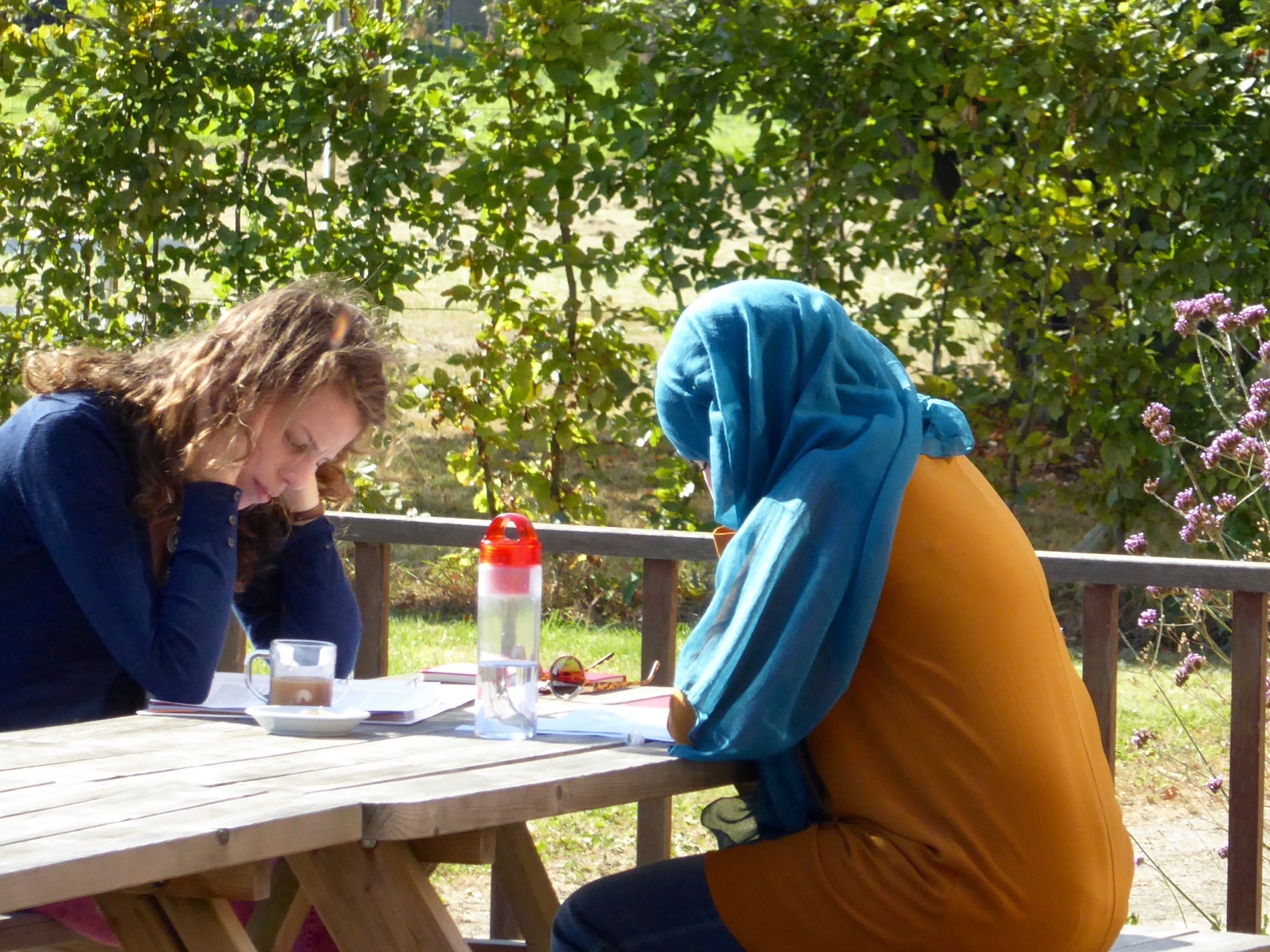
Jan: It’s very important. I think this is where the magic happens. Reading together is not like seeing a movie together when we’re looking at the same screen and Brad Pitt appears the same person for you as for me. When reading a book, you might imagine a character as Brad Pitt but I will have a different image in mind; my understanding of the character might be that he’s aggressive, mean, but my fellow reader might describe him as a hero. . It’s only in the discussion that develops in these pauses in the reading that people realise these differences, and through the discussion people can learn about themselves and about each other. And it’s not like a discussion of politics, where one person announces at the start they are on the left and another says they are on the right. When we read, and then talk about what we’ve read, we’re feeling our way, and learning about our personal ethics or morals because of the way the literature has made us feel, and we’re learning how this might be subtly different, or the same, but just as valuable, as other people’s reactions. It is an enriching experience, especially if the reading guide manages to make connections between these various reactions, so that the group has a sense of pulling together, searching together. This is a way of growing, internally. This is the magic happening – through shared reading people can change their personal colours. And then, if the discussion becomes too exposing, too painful or too challenging, then you can return to the story, which moves on and takes the readers with it.
It’s a wonderful, spontaneous kind of therapy, without actually carrying the label of therapy. If you’re told, ‘maybe you should get some help’, you might reject that idea, but you could go to a Shared Reading group and find all the benefits of therapy there, without expecting it. That is why, in my book, I called it the ‘ultimate’ therapy.
And this magic, this benefit of helping people ‘change their colours’ and grow, how does that link to the professional or wider aim you mentioned, of helping people not just to survive, but to live well?
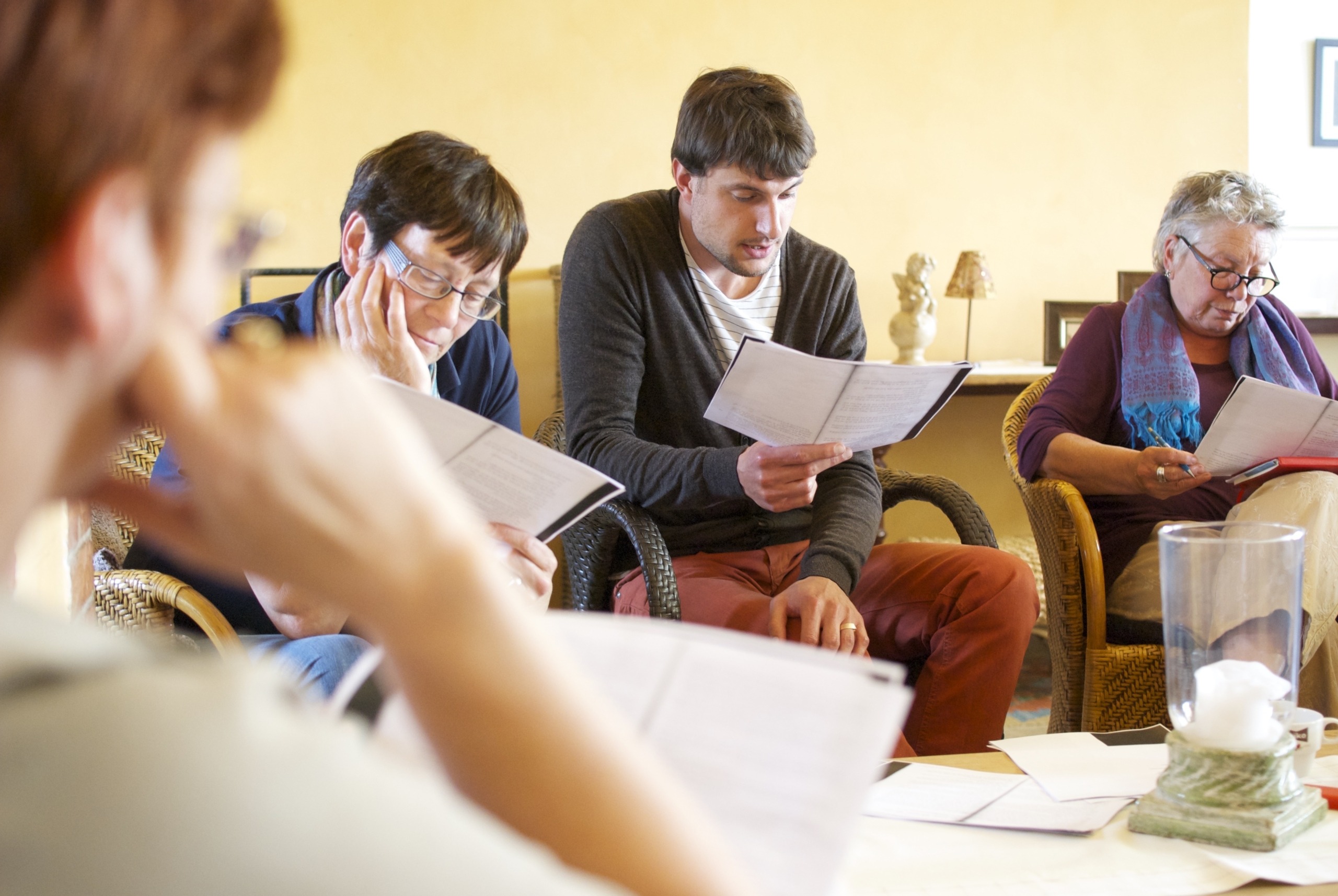
Growth can be adaptation, resilience, growing back to normal, growing back into a system in which one had stopped participating. Growth is not always about being successful, it could be simply being a little less depressed, or adapting to depleted capability. Often medical doctors think things are what they are, and cannot be changed: an anxious person will always be anxious; you will never excel because you came from a family that struggled; you will never be a boy because you are girl, etc. But in fact, that is a narrow point of view. Through reading, you can participate in any experience. You can enlarge and grow without limits. After all, our neurological system is always capable of growing – even if you are eighty years old, there are neurons in your brain which are still flexible and can still learn new things.
Why has Het Lezerscollectief been so successful, do you think?
Dirk: The people we recruit as volunteer ‘Reading Companions’ are strongly motivated and well-trained in working with particular groups or communities..
Over 80 per cent of the 160 people working for Het Lezerscollectief are volunteers, working throughout Flanders and Brussels, and running more than 150 Shared Reading groups in numerous care contexts including prisons, places of education and institutions for vulnerable young people, in care homes, mental care clinics and cancer clinics. We also run Shared Reading in business settings.
How do you help your volunteers to choose literature that will work well in a Shared Reading group?
Dirk: It starts in the training of course, but we know that volunteers might not have the time or resources to find suitable literature week in, week out. So we’ve published anthologies of stories and poetry – two for adults and one for young people – and we have an even larger collection of literature on our website. Volunteers are free to choose whatever they like, but all the literature they find in these collections and anthologies has been carefully chosen.
Do you have particular favourite stories or poems which you recommend for use in Shared Reading groups?
Dirk: We often use the story ‘Two Words’ by Isabel Allende in our training, it is always very revealing for the participants and for the Reading Companion leading the session. Likewise, the poem ‘Bluebird’ by Charles Bukowski helps participants express their deepest feelings. Toon Tellegen is a very famous poet in The Netherlands – and in fact, he used to be a GP – and his poem ‘I Drew a Line’ is very relevant to what we were saying earlier about growth and pushing our own frontiers.
Jan, will you tell us more about the recent Het Lezerscollectief project based in a cancer treatment clinic in Belgium?
Jan: This was at Ghent University Hospital, where we worked with the head of the haematology clinic, Professor Tessa Kerre, and a medical team, to train 20 masters students of health care to read with haematology and oncology patients. At the start, the idea was to schedule Shared Reading as part of a patients’ ‘down time’, but we persuaded the team to think of it instead as a high-end medical therapy for the patient, and to investigate the medical, social and psychological outcomes. We set out to study not only the effect of Shared Reading on the patient but also on the students reading with them. Jane Davis came to Belgium to give a lecture to the students at the university, and despite it being an evening event, the auditorium was full to bursting, and we had nearly 100 applications for the 20 training places. The trainees were highly educated and motivated but they did not come from that ‘reading tradition’; their heads were filled with anatomy, not literature. But they all had a heart for literature.
The Shared Reading experience in this study was very different. In our groups there are normally a few voices ready to add to the discussion, but in this study the students were reading one to one, with a patient who was suffering, so in those pauses in the reading there might be silence, grief or even anger. They also had to contend with the various challenges of the busy hospital setting and its interruptions and background noise.
The study has finished now, and we have so many extraordinary and fascinating accounts from those who took part. The young students developed very strong connections to their patients, who were usually older, and learned to see them in a very different way. Instead of seeing a sickness they have to study, they saw a person with a history and stories to tell. We don’t yet have the scientific data, but two outcomes are already clear – the students all loved the experience, and real, lasting relationships were formed. They are already planning a repeat of the study, and it will be easier to recruit participants from the patients this time because they have evidence of the positive effects that Shared Reading can have.
Dirk: We already know that in the new building of the University Hospital currently under construction, they are planning a special space for Shared Reading. They want to start a weekly Shared Reading group, as well as the one-to-one sessions, and provide a place where ex-patients can come and keep contact with staff and other patients, to find connection and support even after their treatments have finished.
Fantastic! We want these Shared Reading rooms in every hospital! What are your aims and ambitions for the future of Het Lezerscollectief?
Jan: I would like to make more anthologies with stories carefully chosen to help readers think more deeply about the ethics of life, or about spirituality. And we need to make a collection of very short stories to be read in groups within businesses.
Dirk: We already have groups in these business environments, and they see the good effects of Shared Reading, but we hear from these groups that they need even shorter material because of the time pressures and the time cost. With even shorter pieces, the ritual of reading together could become even more embedded in working life – starting meetings with a reading, for instance. In the short term, I’m excited to see what we can do with Jan’s wonderful book, The Ultimate Therapy, which is now available in an English translation.
I think we can grow Het Lezerscollectief still more. I want to bring about the reading revolution, I want everyone to learn to be more connected with the story we carry within us. But I want to grow but not merely for growth’s sake – we must always stay connected to our starting principles. We work very closely with The Reader in the UK, it is a very warm relationship which we formalised with a Letter of Friendship in 2019. Erik, Jan and I, share the same aims with The Reader and with the 160 volunteers and staff of Het Lezerscollectief, and that is precious. I wouldn’t want to grow our groups too quickly and lose that energy, that ambition which starts from great literature, and from a warm heart for literature and for one another.

Dr Jan Raes’s book, Shared Reading: The Ultimate Therapy, (translated by Ian Connerty) brings together the valuable experiences and insights Jan has gleaned from his work with Het Lezerscollectief over the past eight years. The English translation is be available at The Reader’s Bookshop in Calderstones Park and online.
Share
Related Articles
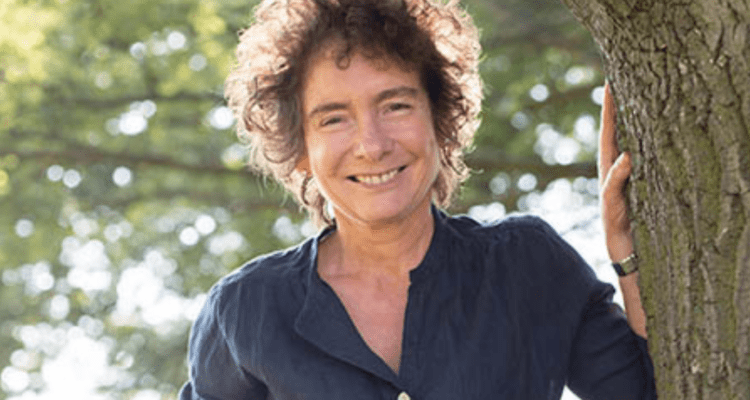
Reader Revisited: Jane Davis in Conversation with Jeanette Winterson
We're taking a trip down memory lane and revisiting articles from The Reader Magazine. This article first appeared in issue 44.…

Henrik Wig, Sweden: ‘In a world where democracy is in many ways threatened, Shared Reading can be a counterforce’
Literature teacher Henrik has been running Shared Reading groups across southern Sweden for six years with children’s groups and at…
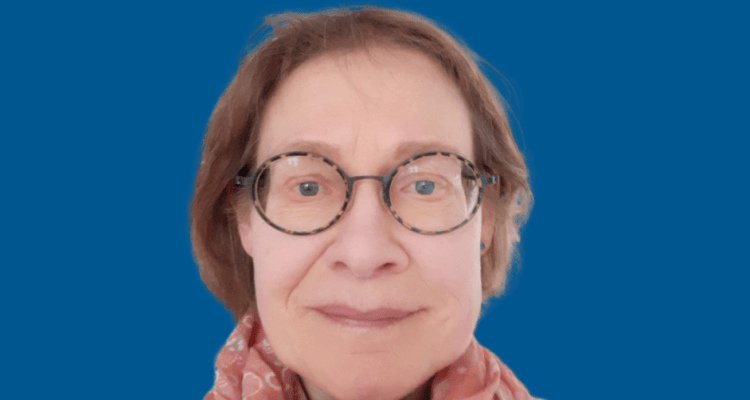
Kerstin, North Germany: ‘In all these groups I’ve the privilege to continuously learn’
An experienced Reader Leader, Kerstin now runs several Shared Reading Bremen groups since training in Berlin with The Reader in…

